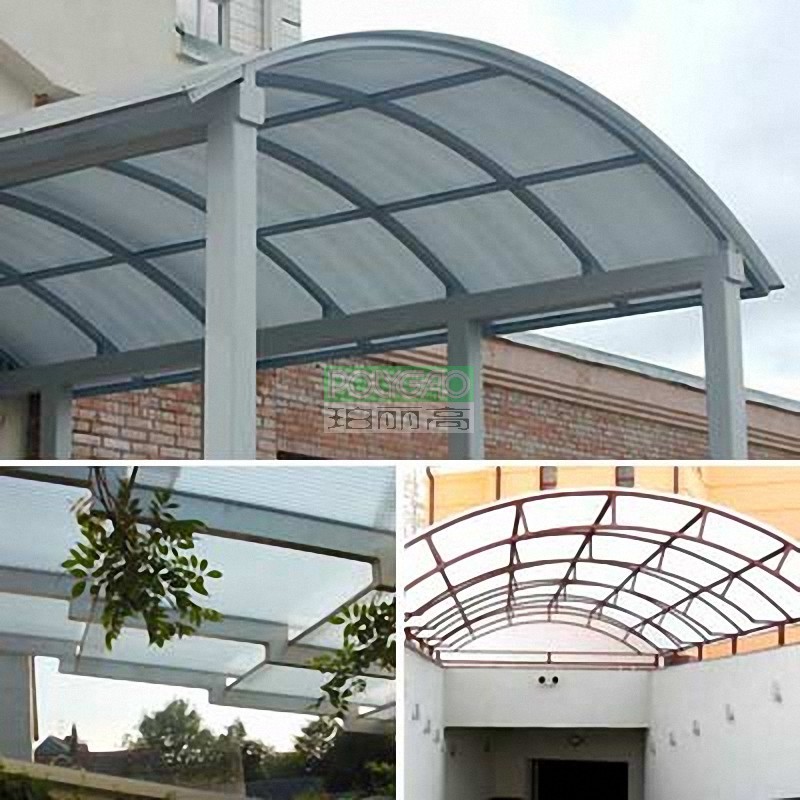-
Phone +86 13928238273
-
gigi@polygao.com

Polycarbonate sheets have become increasingly popular in a variety of applications, thanks to their outstanding durability, impact resistance, and versatility. However, one key consideration when working with polycarbonate sheets is determining the appropriate thickness for your specific project. Whether you're planning to use them for roofing, glazing, or any other application, the thickness of the polycarbonate sheet can greatly affect its performance.
Polycarbonate is a high-performance, lightweight thermoplastic material known for its exceptional strength, transparency, and resistance to impact and extreme weather conditions. It is a popular choice for a wide range of applications, including greenhouse glazing, skylights, protective barriers, and signage.
Selecting the correct thickness of polycarbonate sheet is essential for ensuring the success of your project. Here are the key factors to keep in mind:
The first consideration when determining polycarbonate sheet thickness is the intended purpose. Polycarbonate sheets are available in various thicknesses, ranging from 4mm to 25mm or more. The application can significantly impact the required thickness:
Glazing and windows: For standard windows and glazing applications, thinner sheets, such as 4mm to 6mm, are typically sufficient. However, if you need added insulation or impact resistance, thicker sheets may be necessary.
Greenhouse construction: When building a greenhouse, the choice of thickness depends on factors such as the climate, temperature control needs, and local weather conditions. Thicker sheets, often in the 8mm to 10mm range, are commonly used for better insulation.
Roofing: Polycarbonate sheets can be used for roofing, especially in industrial and agricultural settings. Thicker sheets, typically 10mm to 16mm, offer better structural integrity and resistance to hail and heavy rain.
Security barriers: For applications where impact resistance and security are essential, thicker sheets, often 10mm or more, are chosen.
The local climate plays a vital role in determining the appropriate thickness. If your project is situated in an area with extreme weather conditions, such as heavy snow or intense sunlight, you'll want to opt for thicker sheets to ensure durability and longevity. Thicker sheets provide better thermal insulation in cold climates and offer UV protection in sunny regions.
Consider the load-bearing capacity of your project's structure. Thicker polycarbonate sheets are heavier, and the structure must be designed to support the added weight. Consult with a structural engineer if needed to ensure the safety of your installation.
Budget constraints are a significant factor for many projects. While thicker sheets offer superior performance, they are generally more expensive than thinner ones. Carefully assess your budget to strike the right balance between cost and performance. It's essential to find a thickness that meets your project's requirements without overstretching your budget.
The visual aspect of your project may also influence your choice of thickness. Thicker sheets can distort light and may reduce transparency compared to thinner sheets. Consider how the visual appeal of the project may be affected by your choice.
Always take into account the polycarbonate sheet manufacturers' recommendations and guidelines for their specific polycarbonate sheets. They often provide detailed information about the recommended thickness for different applications and environmental conditions.

Single-wall polycarbonate sheets consist of a single layer and are generally thinner. They are often used for basic applications such as protective barriers and simple glazing.
Multi-wall polycarbonate sheets, which include the four-wall variety discussed in this article, have multiple layers separated by air gaps, providing enhanced insulation and strength. Thickness matters more in multi-wall sheets because it determines the number of layers and, thus, their insulation and impact resistance properties.
While it's possible to use different thicknesses within the same project, it may not always be practical or visually appealing. Mixing thicknesses can lead to variations in light transmission, insulation, and overall aesthetics. It's usually best to use consistent thicknesses for uniform performance.
The lifespan of polycarbonate sheets can vary based on factors like thickness, UV exposure, and local climate. Thicker sheets tend to be more durable and have a longer lifespan, making them a better choice for applications where longevity is essential.
Yes, polycarbonate sheets can be cut and trimmed to fit your specific project requirements. However, it's essential to use the appropriate tools, such as a circular saw with a fine-tooth blade, to ensure clean cuts. Always follow the polycarbonate sheet manufacturers guidelines for cutting and handling.
Selecting the right thickness of polycarbonate sheet is a critical decision that can greatly impact the success of your project. By considering the intended purpose, local climate, load-bearing capacity, budget, aesthetics, and manufacturer recommendations, you can make an informed choice.
Polygao is one of the polycarbonate sheet manufacturers in China. Whether you need the lightweight and economical benefits of thinner sheets or the superior insulation and durability of thicker ones, there's a polycarbonate sheet thickness that will best suit your needs.